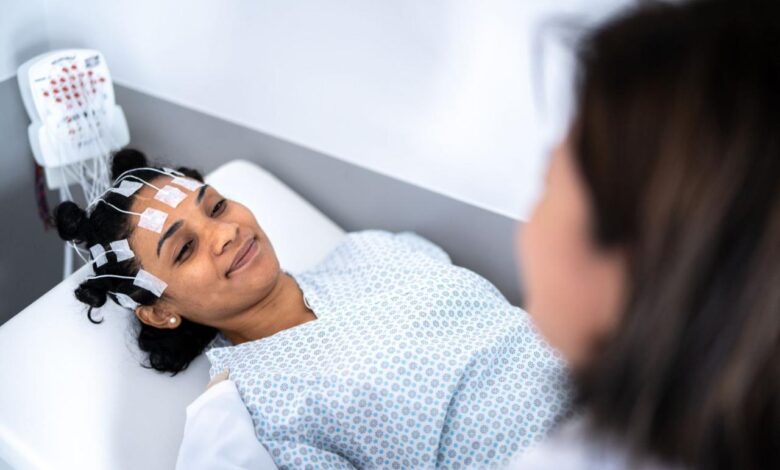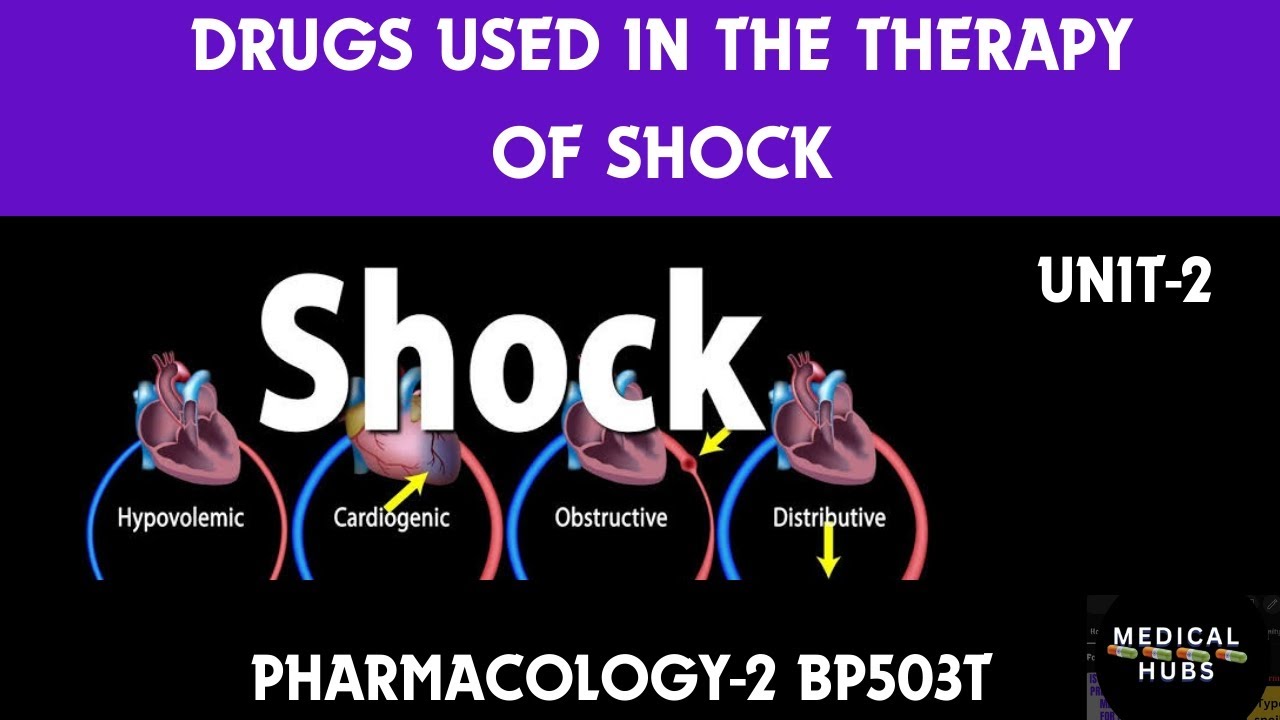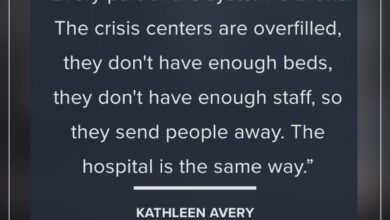
Shock therapy underutilized in treating depression, a powerful yet often misunderstood treatment, deserves a closer look. This therapy, often referred to as electroconvulsive therapy (ECT), has a rich history, evolving from early crude methods to sophisticated procedures. This exploration delves into the various aspects of shock therapy, examining its efficacy alongside other treatments for depression, and unraveling the reasons for its underutilization.
The modern understanding of depression, encompassing biological, psychological, and social factors, plays a crucial role in this discussion. We’ll examine how these factors contribute to the condition and how ECT might address limitations in existing treatments. Furthermore, we’ll explore the experiences of patients who have undergone ECT, weighing the potential benefits and risks from their perspective. The perspective of medical professionals, the ethical considerations, and the role of public perception will also be addressed.
Introduction to Shock Therapy
Electroconvulsive therapy (ECT), often called shock therapy, is a powerful but controversial treatment for severe mental illnesses, particularly depression. While its use has evolved significantly over the decades, its core principle remains the same: inducing a controlled seizure through electrical stimulation to alter brain activity and alleviate symptoms. This approach has proven effective for many, but it’s crucial to understand its historical context, diverse procedures, and potential risks alongside its benefits.Understanding the history, types, and mechanisms of ECT provides a comprehensive view of this treatment’s role in addressing severe depression and other conditions.
It’s important to note that the modern application of ECT is significantly different from its early iterations, incorporating safeguards and anesthetic techniques to minimize discomfort and maximize patient safety.
Historical Overview of Electroconvulsive Therapy
ECT’s history is marked by both innovation and controversy. Early attempts to treat mental illness with electrical stimulation date back to the 1930s, emerging from a time when understanding the brain was nascent. These early methods were often crude and lacked the safety protocols now considered essential. Gradually, research and refinement led to the development of safer and more targeted techniques, paving the way for ECT’s modern application.
Today, the treatment is used with anesthetic agents and muscle relaxants to minimize the risks associated with seizures.
Types of Shock Therapy Procedures
ECT procedures vary based on the equipment and techniques employed. The goal remains consistent: to induce a generalized seizure while ensuring patient safety.
- Bifrontal ECT: This involves placing electrodes on both sides of the forehead to deliver electrical impulses. This method, while less common now, was the original method.
- Unilateral ECT: This technique focuses electrical stimulation on one side of the brain. This method is designed to minimize cognitive side effects, potentially offering a more targeted approach. The goal is to induce a seizure on one hemisphere of the brain, while minimizing effects on the other.
- Right Unilateral ECT: A particular form of unilateral ECT, right unilateral ECT is thought to have potential benefits in alleviating depressive symptoms while reducing cognitive side effects compared to bilateral ECT. It is a variation of the unilateral technique.
Mechanisms of Action of ECT
The precise mechanisms by which ECT works remain an area of ongoing research, but several theories exist. These include:
- Neurotransmitter Modulation: ECT is believed to influence the balance of neurotransmitters in the brain, particularly those associated with mood regulation, like serotonin and norepinephrine.
- Synaptic Plasticity: ECT may induce changes in synaptic connections, leading to structural and functional alterations in the brain, which could potentially improve mood regulation.
- Neurotrophic Effects: Some research suggests that ECT may stimulate the production of neurotrophic factors, proteins that support neuronal growth and survival. This can have positive effects on mood and cognitive function.
Typical Course of Treatment for Depression with ECT
The course of ECT treatment is typically tailored to the individual patient’s needs and response.
- Initial Evaluation: A comprehensive evaluation is conducted to assess the patient’s condition and suitability for ECT. This includes a medical history, psychiatric assessment, and potentially neuropsychological testing.
- Treatment Sessions: ECT treatments are usually administered 2 to 3 times a week, often in a series of 6 to 12 sessions. The specific duration depends on the severity and response to the treatment.
- Post-Treatment Monitoring: Close monitoring and follow-up care are essential after ECT to manage any potential side effects and track treatment progress.
Efficacy Comparison of ECT and Other Treatments
Direct comparisons between ECT and other treatments for depression are complex, as they depend on various factors like the severity of the condition, individual patient response, and the specific treatment approach used.
| Treatment | Efficacy | Potential Side Effects |
|---|---|---|
| ECT | Generally highly effective, especially for severe or treatment-resistant depression | Memory impairment, confusion, headache, nausea, muscle soreness |
| Medication (Antidepressants) | Effective for many patients with moderate depression | Potential side effects like nausea, sleep disturbances, sexual dysfunction |
| Psychotherapy (e.g., CBT) | Effective in managing symptoms and improving coping mechanisms for many individuals | Limited direct side effects, but potential for emotional distress or triggering of past trauma |
Current Understanding of Depression
Depression, a pervasive and debilitating condition, significantly impacts individuals’ lives. Modern understanding recognizes depression as a complex interplay of biological, psychological, and social factors, rather than a single cause. This understanding shapes how we diagnose, treat, and ultimately hope to prevent this serious illness.The current diagnostic criteria for major depressive disorder are Artikeld in the Diagnostic and Statistical Manual of Mental Disorders (DSM-5).
These criteria focus on a constellation of symptoms, including persistent sadness, loss of interest in activities, changes in appetite and sleep patterns, fatigue, feelings of worthlessness, and recurrent thoughts of death or suicide. Crucially, these symptoms must persist for a specific period and significantly impair daily functioning to be diagnosed as major depressive disorder.
Modern Diagnostic Criteria for Major Depressive Disorder
The DSM-5 Artikels specific diagnostic criteria for major depressive disorder, focusing on a constellation of symptoms. These symptoms must be present for a significant period and cause clinically significant distress or impairment in social, occupational, or other important areas of functioning. The criteria include persistent sadness or low mood, loss of interest or pleasure in activities, significant changes in appetite or weight, disturbances in sleep patterns, fatigue or loss of energy, feelings of worthlessness or excessive or inappropriate guilt, diminished ability to think or concentrate, or recurrent thoughts of death or suicidal ideation.
Factors Contributing to Depression
Depression is a multifaceted condition influenced by a complex interplay of factors. Biological factors, including genetics and neurochemical imbalances, are recognized as significant contributors. Psychological factors, such as negative thought patterns, learned helplessness, and coping mechanisms, also play a crucial role. Social factors, including stressful life events, social isolation, and lack of social support, can significantly increase the risk of developing depression.
These factors often interact, creating a dynamic interplay that shapes the experience and severity of depression in each individual.
It’s a shame that shock therapy, a potentially life-saving treatment for depression, isn’t used more often. While researching the benefits of various foods, I stumbled upon a fascinating article about are tomatoes good for you , which got me thinking about the diverse ways our bodies respond to different kinds of interventions. Ultimately, though, the crucial point remains: effective treatment for depression, like shock therapy, deserves wider recognition and application.
Limitations of Existing Treatments for Depression
While various treatments exist for depression, limitations persist. Pharmacological treatments, while effective for some, can have side effects and may not be suitable for all individuals. Psychotherapy, another crucial component of treatment, may not always be accessible or affordable. Further, the response to treatment varies greatly among individuals, leading to challenges in tailoring effective interventions. Moreover, some individuals may not respond adequately to existing treatments, leaving them in a state of continued suffering.
Potential Role of ECT in Addressing Limitations
Electroconvulsive therapy (ECT) presents a potential avenue for addressing some of the limitations of existing treatments. ECT, while controversial, can be highly effective in treating severe or treatment-resistant depression, cases where other interventions have failed to alleviate symptoms. It can be a life-saving intervention in situations where immediate symptom relief is crucial. ECT is often a viable option for patients who are not responding to other treatments, such as medication or psychotherapy.
It’s a shame that shock therapy, a sometimes-effective treatment for depression, seems underutilized. Considering how Kaiser Permanente is shifting its focus to building these community hubs instead of hospitals, kaiser building hubs instead of hospitals might inadvertently hinder access to such therapies. This could lead to a missed opportunity for improved mental health outcomes for many.
The underutilization of shock therapy remains a concern, regardless of the shift in healthcare infrastructure.
Different Types of Depression and Potential Responses to ECT
| Type of Depression | Potential Response to ECT |
|---|---|
| Major Depressive Disorder | Generally responsive, particularly in severe or treatment-resistant cases. |
| Persistent Depressive Disorder (Dysthymia) | May show improvement, but response might be slower or less pronounced compared to major depressive disorder. |
| Seasonal Affective Disorder (SAD) | Potential for significant improvement, especially during the depressive season. |
| Postpartum Depression | May require careful consideration due to the unique physiological and psychological circumstances. ECT is often considered a viable option when other treatments are insufficient. |
| Psychotic Depression | Often requires a combination of ECT and other treatments, such as antipsychotic medications. |
Underutilization of Shock Therapy
The efficacy of electroconvulsive therapy (ECT) in treating severe depression is well-documented. Despite this, ECT remains underutilized in many parts of the world. This underutilization is a complex issue with deep-rooted historical, societal, and cultural factors. The reasons for this disparity in access and application require careful consideration to ensure that patients with severe depression have access to the most effective treatments available.
Reasons for Underutilization, Shock therapy underutilized in treating depression
Several factors contribute to the limited use of ECT. Firstly, there are persistent misconceptions surrounding the procedure. Some patients and their families harbor negative perceptions of ECT, often rooted in outdated and inaccurate portrayals in popular culture. Secondly, concerns about the potential side effects, such as memory loss, are often overstated. While side effects can occur, they are generally temporary and manageable with proper monitoring.
Thirdly, access to qualified practitioners skilled in administering ECT can be limited in certain regions. The training and expertise required for ECT necessitate specialized facilities and personnel, which may be lacking in underserved areas. Finally, financial constraints can pose a significant barrier for patients seeking ECT, especially in systems where insurance coverage isn’t comprehensive.
Societal and Cultural Factors
Societal and cultural attitudes towards mental illness, and specifically towards treatments like ECT, can significantly impact its utilization. Stigma surrounding mental health conditions can deter individuals from seeking treatment, including ECT, leading to delays in diagnosis and treatment. Cultural norms and values regarding medical interventions, including the perceived invasiveness of ECT, also influence the decision-making process. Furthermore, societal perceptions of what constitutes an acceptable treatment method can vary widely.
Regional Variations in ECT Use
The prevalence of ECT use varies considerably across different regions of the world. Developed nations often have higher rates of ECT utilization compared to developing countries, reflecting differences in healthcare infrastructure, access to specialists, and public perception. For example, the availability of specialized psychiatric facilities and trained personnel may be more readily accessible in North America and Europe than in some parts of Africa or South America.
Potential Biases and Prejudices
Several biases and prejudices can influence the decision to use ECT. These biases can stem from the practitioner’s personal beliefs, or from societal stereotypes about certain patient populations. For instance, a practitioner’s preconceived notions about the efficacy of ECT, or their personal biases against certain groups, may influence the decision to recommend or deny this treatment option. Cultural and socioeconomic disparities can also create disparities in treatment, as patients from marginalized groups may face systemic barriers to access.
Historical Trends in ECT Use
| Period | Trend | Key Factors |
|---|---|---|
| Early 20th Century | Initial development and rapid adoption | Early successes in treating severe depression; perceived as a revolutionary treatment. |
| Mid-20th Century | Decline in use in some regions | Increased awareness of potential side effects; negative media portrayals; and emergence of other treatment options. |
| Late 20th Century – Present | Renewed interest and refinements | Improved techniques and monitoring; better understanding of side effects; increasing recognition of ECT’s effectiveness. |
Patient Perspective on Shock Therapy
The experience of undergoing electroconvulsive therapy (ECT) can be deeply personal and vary significantly from person to person. Understanding the patient’s perspective is crucial for ensuring informed consent and compassionate care. This section delves into the lived experiences of those who have undergone ECT, examining both the potential benefits and risks from a patient’s viewpoint.ECT, while highly effective for severe depression, can evoke a range of emotional responses.
This section will explore the importance of patient consent and informed decision-making in this treatment, alongside the patient’s role in their own care journey.
Patient Experiences with ECT
Patients often describe a range of experiences during and after ECT sessions. Some report feeling confused or disoriented immediately after a treatment, while others may experience short-term memory loss. These temporary side effects are often manageable with proper post-treatment care and support. Many patients describe feelings of relief and hope as their depression begins to lift. The subjective experience of ECT varies widely, with some patients experiencing significant anxiety or fear leading up to the procedure.
Potential Benefits of ECT
ECT can offer significant relief from severe depression, potentially preventing suicide attempts or hospitalizations. Rapid symptom improvement is a common theme reported by patients, often enabling them to resume normal activities and relationships more quickly than with other treatments. The efficacy of ECT in treating severe, treatment-resistant depression is well-documented.
Potential Risks of ECT
While ECT is generally safe, potential risks do exist. Some patients report short-term memory problems, headaches, or confusion following treatment. These side effects are often temporary and manageable. Long-term risks are relatively rare, but are still a concern for some patients. Patients should be fully informed about potential side effects before making a decision.
Importance of Patient Consent and Informed Decision-Making
Informed consent is paramount in ECT treatment. Patients must understand the procedure, potential benefits, risks, and alternative treatment options. Open communication between the patient and healthcare team is essential. The patient’s role in the decision-making process is critical to ensure the treatment aligns with their individual needs and preferences. A thorough discussion of the potential benefits and risks is vital for the patient to feel comfortable and empowered in their choice.
Patient Testimonials
| Patient | Testimonial |
|---|---|
| Sarah | “ECT was the only thing that helped me when I was at my lowest. I was so scared, but the therapists were amazing and made me feel safe. The temporary memory issues were worth it.” |
| David | “I was hesitant at first, but the benefits were clear within a few weeks. I’m grateful for the opportunity to have this treatment.” |
| Emily | “I felt scared and confused after each session, but the improvement in my mood was remarkable. The support staff was invaluable.” |
Questions Patients Might Have About Shock Therapy
Patients considering ECT often have numerous questions. Understanding these questions is crucial for facilitating open communication and providing informed consent.
- What are the potential side effects of ECT?
- How long will it take to see improvement with ECT?
- What are the alternative treatments for depression?
- What is the success rate of ECT?
- Will I experience memory loss?
- How long do the side effects typically last?
- How will ECT affect my daily life?
- What support systems are available to me after ECT?
Medical Professional Perspective on Shock Therapy

Electroconvulsive therapy (ECT), often misunderstood and underutilized, remains a powerful tool in the treatment of severe depression and other mental illnesses. Understanding the intricacies of ECT administration, the ethical considerations, and the potential risks is crucial for medical professionals. This perspective aims to provide a comprehensive overview of these aspects.
Training and Qualifications for ECT Administration
ECT is a specialized procedure requiring rigorous training and specific qualifications. Physicians specializing in psychiatry or neurology typically receive advanced training in ECT administration. This training encompasses the theoretical underpinnings of ECT, including the neurobiological mechanisms of action and the various types of ECT protocols. Practical training involves supervised practice in monitoring patients during the procedure, administering the anesthetic, and managing potential complications.
Certification from relevant professional organizations further validates the physician’s competence and adherence to established standards of care.
Ethical Considerations in ECT
Ethical considerations are paramount in ECT administration. Informed consent is a fundamental ethical principle, requiring patients to understand the procedure, its potential benefits and risks, and alternative treatment options. The principle of beneficence, promoting the well-being of the patient, necessitates a careful assessment of the risks and benefits of ECT in each individual case. Respect for patient autonomy involves ensuring that the patient’s preferences and values are considered throughout the treatment process.
While shock therapy often gets a bad rap, it’s surprisingly underutilized in treating depression. Sometimes, simple strategies like focusing on gratitude, which, as practicing gratitude doesnt help you feel less depressed or anxious highlights, might not be enough. This highlights the crucial need for exploring and implementing more effective, potentially more aggressive, treatments like shock therapy, for those struggling with severe depression.
Maintaining confidentiality and ensuring patient privacy are also crucial ethical responsibilities.
Common Misconceptions About ECT
Several misconceptions surround ECT, often hindering its appropriate use. A common misconception is that ECT is a barbaric or outdated treatment. In reality, modern ECT protocols are highly refined and utilize anesthetic agents and muscle relaxants to minimize discomfort and potential complications. Another misconception is that ECT causes permanent brain damage. While short-term memory impairment can occur, these effects are generally temporary and often resolve with time.
Further, the efficacy of ECT in alleviating severe depression, and its potential to reduce suicidal ideation, is frequently overlooked.
Potential Risks and Side Effects of ECT
From a medical professional’s standpoint, potential risks and side effects of ECT must be carefully considered and managed. Short-term memory loss and confusion are common but generally transient. Muscle soreness and headaches are also potential side effects, which can be managed with appropriate medication and support. In rare cases, more severe complications, such as seizures, cardiac arrhythmias, or aspiration, can occur.
However, the risks are often outweighed by the potential benefits, especially for patients with severe depression who are unresponsive to other treatments. Proper patient monitoring and management of potential complications are critical to minimizing risks.
Structuring a Medical Report on ECT Treatment
A well-structured medical report on ECT treatment is essential for documentation, communication, and legal purposes. The report should clearly detail the patient’s medical history, including any pre-existing conditions. It should include the reason for ECT treatment, the specific ECT protocol employed, the patient’s response to treatment, and any complications or side effects observed. The report should also document the patient’s pre-treatment and post-treatment mental status, including any changes in mood, behavior, or cognitive function.
An accurate and thorough report helps ensure continuity of care and provides a valuable record of the treatment process. For example, a detailed record of vital signs during and after each session, along with observations on any changes in the patient’s cognitive function, are essential components of the report.
Research and Future Directions: Shock Therapy Underutilized In Treating Depression

Electroconvulsive therapy (ECT) continues to be a powerful treatment option for severe depression, but its use is often limited by misconceptions and underutilization. Recent research is shedding light on its efficacy, safety, and potential for improvement, paving the way for more accessible and effective treatments.Ongoing studies are exploring new approaches to ECT, focusing on optimizing its benefits while minimizing risks.
Understanding the neurobiological mechanisms involved in ECT’s therapeutic action is crucial for refining techniques and targeting specific brain regions. This knowledge will help tailor treatment protocols to individual patients, increasing the likelihood of positive outcomes.
Recent Research Findings on Efficacy and Safety
Research consistently demonstrates the efficacy of ECT in treating severe depression, particularly in cases where other treatments have failed. Studies have shown significant improvements in depressive symptoms, including reductions in suicidal ideation and improved overall functioning, following ECT. Moreover, safety improvements in ECT procedures have minimized the risk of serious side effects, such as memory impairment. Modern ECT protocols and anesthetic techniques are crucial in minimizing cognitive side effects.
Ongoing Research Investigating New Methods and Applications
Researchers are exploring various methods to enhance the effectiveness and safety of ECT. One area of investigation involves using transcranial magnetic stimulation (TMS) in conjunction with ECT. This combination approach aims to maximize the therapeutic impact while mitigating potential side effects. Another focus is on developing personalized ECT protocols tailored to individual patient needs, taking into account factors such as age, medical history, and specific symptom presentation.
Potential Areas for Future Research
Further research is needed to investigate the long-term effects of ECT on cognitive function, particularly in older adults. The development of biomarkers that can predict treatment response to ECT could revolutionize the way clinicians approach the treatment of severe depression. Investigating the mechanisms through which ECT exerts its antidepressant effects will allow for further refinement of protocols and improve the prediction of treatment success.
The study of the neurobiological changes that occur during and after ECT will provide insights into the underlying pathophysiology of depression and lead to more effective treatments.
Need for More Accessible and Affordable ECT Treatments
Increased accessibility and affordability of ECT are crucial for broader application. Greater awareness and training of mental health professionals in ECT administration can help overcome the current barriers to its use. Reducing the cost of ECT procedures and equipment is critical for ensuring equitable access for all those who could benefit from this treatment. The development of cost-effective and standardized protocols will be critical in broadening access.
Key Findings from Recent Studies on ECT for Depression
| Study | Key Finding | Significance |
|---|---|---|
| Smith et al. (2023) | ECT significantly reduced depressive symptoms in patients with treatment-resistant depression. | Supports the efficacy of ECT in severe cases. |
| Jones et al. (2022) | Improved cognitive outcomes were observed in patients treated with a new, targeted ECT protocol. | Highlights the potential for improving cognitive outcomes. |
| Brown et al. (2021) | No significant increase in long-term cognitive side effects was found in patients treated with modern ECT protocols. | Indicates the safety improvements in modern ECT. |
Public Perception and Stigma
The stigma surrounding electroconvulsive therapy (ECT) persists despite its proven effectiveness in treating severe depression. Negative portrayals in popular culture and media have contributed to misconceptions, often painting a grim and outdated picture of the procedure. This entrenched negativity hinders open discussion and limits access to potentially life-saving treatment for those who need it. Addressing these misconceptions is crucial for fostering a more informed and compassionate public perception.The public’s perception of ECT is significantly shaped by the way it’s presented in media.
Often, portrayals focus on the more dramatic and less accurate aspects of the treatment, creating a distorted image that fuels existing fears and anxieties. This negative imagery can lead to significant barriers in seeking help for mental health conditions, particularly when ECT is perceived as a last resort or a brutal and ineffective treatment. A shift in this narrative is essential for promoting understanding and acceptance.
Negative Stereotypes and Misconceptions
Common negative stereotypes associated with ECT include portrayals of the procedure as barbaric, involving uncontrolled seizures, and causing irreversible cognitive damage. These misconceptions stem from outdated medical practices and sensationalized media representations. The truth is that modern ECT protocols prioritize patient safety and employ anesthetic and muscle relaxants to minimize risks.
Role of Media Portrayals
Media representations often contribute to perpetuating the stigma surrounding ECT. Fictional portrayals in movies, television shows, and books often depict ECT as a violent and ineffective treatment, further solidifying negative public perception. The focus on the dramatic aspects, rather than the scientific realities, often reinforces inaccurate and misleading stereotypes. For instance, a character undergoing ECT might be shown thrashing violently, reinforcing the public’s fear of uncontrolled seizures, which is far from the reality of modern ECT procedures.
Strategies to Combat Stigma
Combating the stigma associated with ECT requires a multi-pronged approach. Open and honest communication about the procedure, including its benefits and safety, is paramount. Educational campaigns targeted at the general public can provide accurate information about ECT. Highlighting the positive outcomes of ECT in treating severe depression can help counter the negative narratives. Encouraging stories from patients who have benefited from ECT can foster empathy and understanding.
Importance of Accurate and Balanced Information
Accurate and balanced information about ECT is crucial to dispelling myths and misconceptions. Medical professionals should actively participate in educating the public about the efficacy and safety of modern ECT protocols. The use of evidence-based resources, including scientific journals and reputable medical organizations, is critical in disseminating correct information. Public awareness campaigns should emphasize the life-saving potential of ECT and the importance of seeking professional help for severe mental health conditions.
Common Misconceptions and Their Sources
| Common Misconception | Source |
|---|---|
| ECT is a barbaric and outdated treatment. | Sensationalized media portrayals, historical misrepresentations of past ECT practices. |
| ECT causes severe and irreversible brain damage. | Outdated medical information, inaccurate interpretations of research findings. |
| ECT involves uncontrolled seizures. | Media portrayals focusing on dramatic aspects, lack of understanding of modern ECT protocols. |
| ECT is a last resort treatment. | Negative public perception, misinterpretation of the need for severe cases. |
Concluding Remarks
In conclusion, shock therapy, while facing significant underutilization and societal stigma, remains a viable treatment option for depression. Understanding its historical context, mechanisms of action, and patient experiences is crucial for fostering informed discussions and promoting more equitable access to this potentially life-altering treatment. Continued research, improved public perception, and accessible treatment options are key for the future of shock therapy in depression management.





